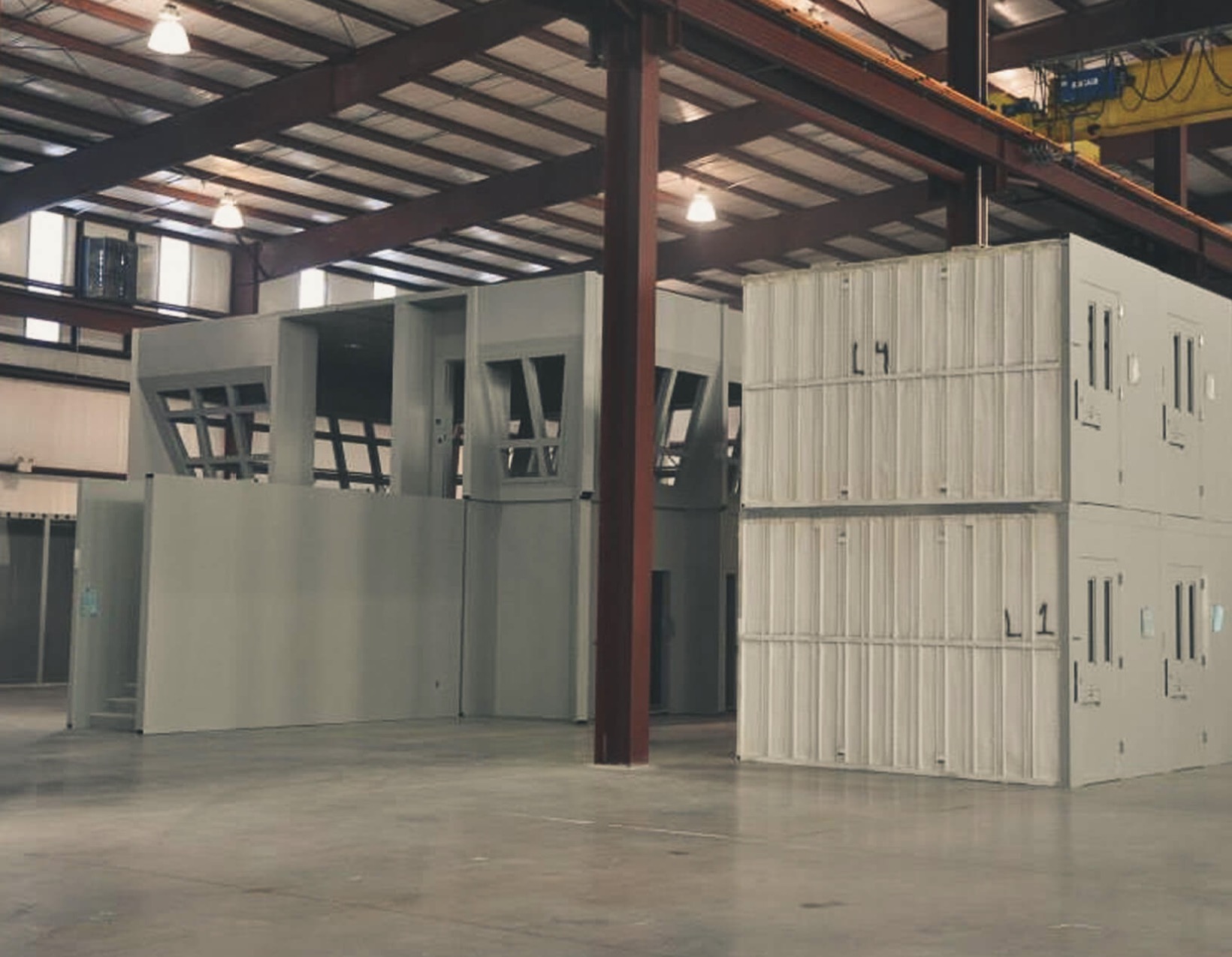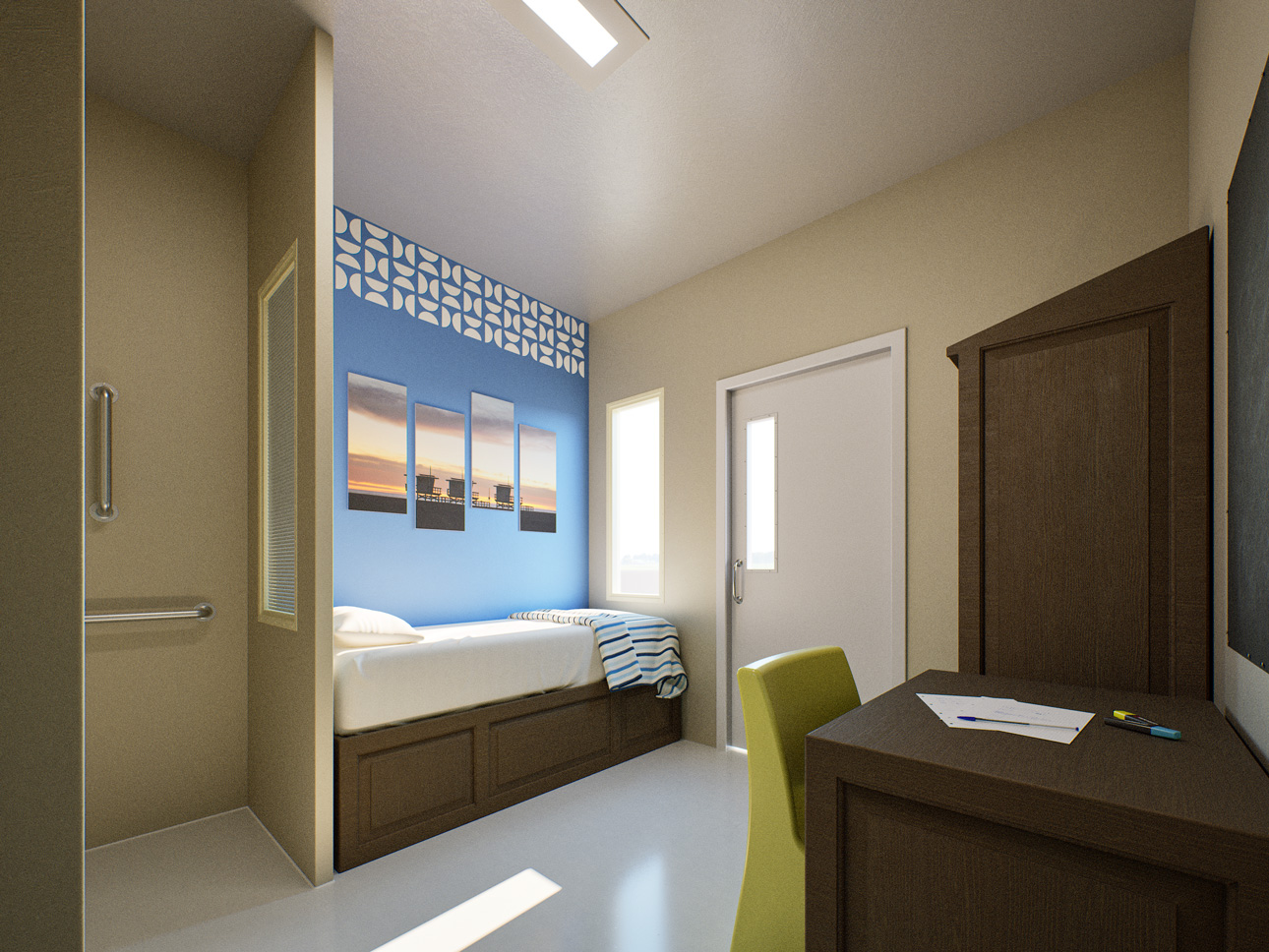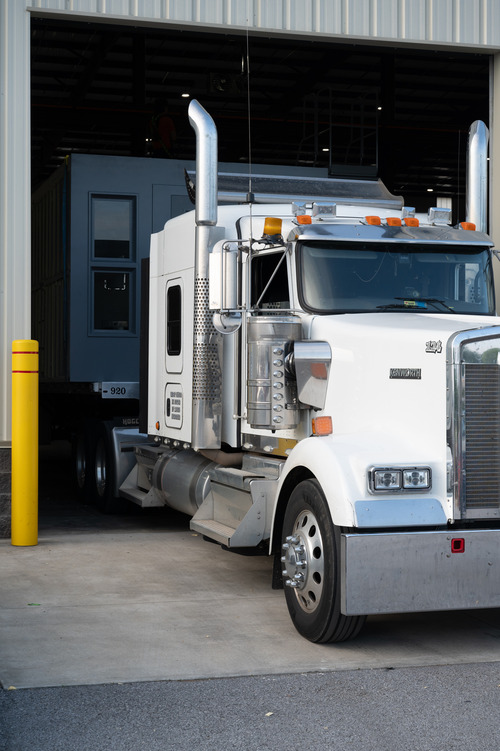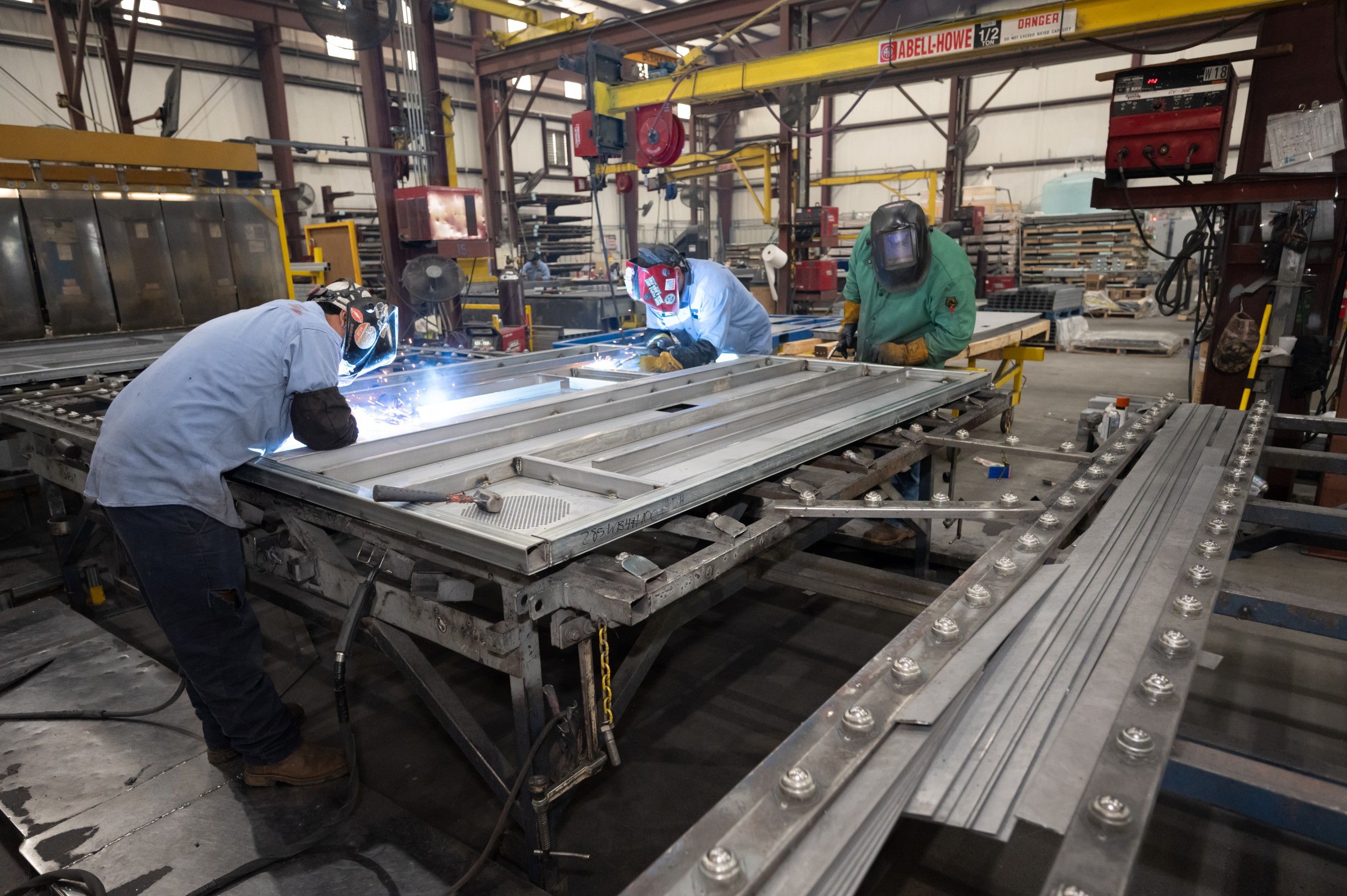Modular Building Systems for Detention Centers: Enhancing Efficiency and Security
Modular building systems offer an innovative solution for constructing detention centers efficiently and effectively. These systems use premanufactured units, which can be assembled quickly. This reduces construction time and costs compared to traditional methods. Additionally, this efficiency minimizes disruptions.
Prefabricated modular assemblies are particularly suited for secure facilities like mid-rise and high-rise urban jails. These units are designed to meet complex performance requirements, ensuring that safety and security standards are maintained. The use of modular units also allows for flexibility and scalability, essential for managing varying inmate populations.
Correctional facilities benefit from modular construction in several ways. The ability to easily expand or modify buildings helps meet changing needs. Additionally, the controlled factory environment where these modules are built can ensure higher quality and consistency, which may not always be achieved with on-site construction. For more detailed insights, refer to Building Prisons: Pre-manufactured, Prefabricated, and Prototype.
Concept of Modular Building Systems
Modular building systems for detention centers use prefabricated modules to construct reliable and secure facilities. This method is known for its efficiency and cost-saving benefits.
Definition and Overview
Modular building systems involve creating sections or “modules” of a structure in a factory setting before transporting and assembling them on-site. These modules can include entire rooms, cells, or sections of a facility. This approach allows for precise quality control and reduces construction time compared to traditional methods.
For detention centers, this method ensures a consistent and secure environment. Modules are built to meet strict standards and can be customized to include safety features. The efficient assembly process minimizes the disruption often associated with large construction projects, providing a faster transition from planning to operational use.
Historical Development
The concept of modular building has evolved significantly since its inception. Initially used for housing and temporary structures, it gained popularity in the mid-20th century. According to one study, early use cases involved prefabricated timber and iron systems. Over time, advancements in materials and techniques made modular construction more robust and adaptable.
In recent years, the use of pre-manufactured modules for correctional facilities has increased. These systems offer a flexible solution that meets the specific needs of secure environments. Innovations have made it possible to build complex facilities quickly, ensuring that standards for safety and durability are met efficiently. This development reflects broader trends in industrialized building that emphasize speed, reliability, and cost-effectiveness.
Advantages of Modular Construction for Detention Centers
Modular construction offers numerous benefits for detention centers, including quicker construction times, reduced costs, and enhanced flexibility and scalability. This approach also ensures better quality control throughout the building process.
Speed of Construction
One of the key advantages of modular construction is the significant reduction in construction time. The modules are built offsite in a controlled environment, which allows for simultaneous site preparation and module fabrication. This parallel process can cut project timelines by up to 50% compared to traditional construction methods.
Another time-saving aspect is the reduced weather delays. Since much of the construction happens indoors, adverse weather conditions have minimal impact. This is crucial for detention centers, where operational timelines are often strict.
Cost-Effectiveness
Modular construction can be more cost-effective due to several factors. Firstly, building modules in a factory setting leads to economies of scale and reduced material waste. Additionally, labor costs can be lower as factory environments are more efficient and require fewer specialized workers.
Transportation and logistics can also be optimized, leading to further cost savings. For detention centers, where budget constraints are often a concern, these savings can be critical in delivering the project within financial limits.
Flexibility and Scalability
Modular buildings offer high flexibility and scalability, which is essential for accommodating changing needs. Detention centers can easily expand or modify their facilities by adding or removing modules. This adaptability means that the facility can grow with the population it serves.
Modules can also be reconfigured to serve different purposes, such as converting administrative areas into holding cells or vice versa. This versatility makes modular construction ideal for environments where quick adjustments may be necessary.
Quality Control
Building modules in a factory setting enhances quality control. Each module undergoes thorough inspections and adheres to strict building codes before being transported to the site. This controlled environment reduces the chances of construction defects and ensures higher build quality.
The use of precision manufacturing techniques further ensures that each module is constructed to exact specifications. For detention centers, where security and durability are paramount, this level of quality control provides peace of mind that the facility meets all required standards.
Modular construction also allows for better integration of building systems. This ensures that electrical, plumbing, and HVAC systems are seamlessly built into the modules, reducing the need for on-site adjustments.
Design Principles of Modular Detention Facilities
Modular detention facilities require special design principles to ensure security, the well-being of occupants, and operational efficiency. These principles guide the creation of environments that maintain safety while supporting humane treatment and maximizing functionality.
Security Considerations
Security is the foremost concern in designing modular detention facilities. Each component, from prefabricated walls to windows, must prevent escapes and unauthorized access. Dual envelope systems enhance security by adding a second layer of protection. These systems often use reinforced materials like steel and concrete. Placement of surveillance cameras and controlled access points is vital to monitor inmate activities and restrict their movements.
Security measures also include unitized curtain walls that integrate alarm systems. These designs help correctional staff maintain control and prevent breaches. Effective lighting and clear sightlines enable constant supervision and reduce the chance of violent incidents.
Occupants’ Well-being
The well-being of detainees is also crucial in modular detention facilities. Good design improves mental health and reduces stress among inmates. Natural light and ventilation play significant roles in creating a positive environment. Integrating windows and skylights into the design allows more daylight, improving mood and psychological health.
Spaces for social interaction and rehabilitation are important. Modular prisons can include areas for education, exercise, and counseling. These areas help in the social development and rehabilitation of inmates. Access to outdoor spaces and greenery further contributes to an environment conducive to rehabilitation and well-being.
Operational Efficiency
Operations in modular detention facilities must be smooth and efficient. The modular nature allows for quick construction and scalability. This means facilities can be expanded or reconfigured without major disruptions or long downtimes. Efficient use of space ensures that all areas are functional and serve their intended purpose.
Prefabricated components streamline maintenance because they are easier to replace or repair. Standardized modules reduce construction costs and time. This efficiency ensures that the facility can remain operational with minimal interruptions. Proper layout and design allow staff to perform their duties effectively, enhancing overall facility management.
Materials and Technologies in Modular Detention Construction
Modular building systems for detention centers use advanced materials and technologies to ensure durability, security, and efficiency.
Innovative Materials
Using prefabricated modular buildings is a common approach in detention center construction. These modular units are often made from high-strength materials like steel and reinforced concrete. Steel provides durability and resistance to damage, making it ideal for secure facilities.
Recycled materials are also gaining popularity. For example, shipping containers can be modified to create secure detention cells. These containers are not only strong and durable but also cost-effective and eco-friendly.
Composite materials are used for their light weight and high tensile strength. These materials help reduce construction time and improve the overall quality of the buildings. Additionally, modules can be easily transported and assembled on-site, minimizing disruption.
The use of advanced materials ensures that detention centers meet the required safety standards while also being cost-effective and quick to build.
Regulatory Compliance and Standards
Ensuring modular building systems for detention centers meet all necessary regulations is crucial. This includes adhering to building codes, maintaining high safety standards, and meeting accessibility regulations. Compliance ensures the safety and well-being of both inmates and staff.
Building Codes
Modular building systems must comply with strict building codes. These codes address structural integrity, material use, and construction techniques. Detention centers require robust and secure structures.
These codes also mandate fire resistance. This includes using fire-rated materials and ensuring proper fire exit routes. Adherence to building codes ensures the facility’s durability and safety, protecting against various hazards.
Building codes also cover plumbing, electrical, and mechanical systems. Regular inspections ensure compliance with these standards, reducing the risk of accidents and ensuring a safe environment for all inhabitants.
Safety Standards
Safety standards are critical in detention centers. They include measures to prevent escapes and maintain internal security. This involves using reinforced materials and secure locking mechanisms.
Another important aspect is fire safety. Detention centers must have effective fire suppression systems, including sprinklers and alarms. Regular drills and staff training are essential to ensure everyone knows safety procedures.
Hygiene and sanitation are also crucial. Facilities must have clean water and effective waste management systems. Adherence to these standards prevents the spread of diseases and ensures a healthy living environment.
Accessibility Regulations
Accessibility regulations ensure that detention centers are usable by individuals with disabilities. This includes designing facilities with ramps, elevators, and accessible restrooms. Compliance with the Americans with Disabilities Act (ADA) is mandatory.
These regulations also cover communication aids. For example, visual and auditory alarms are necessary for those with sensory impairments. Ensuring accessible pathways within the facility is equally important.
Providing appropriate medical care for inmates with disabilities is a critical aspect. Facilities must have accessible medical rooms and equipment to address various health needs. Compliance with these regulations ensures fair treatment of all inmates.
Project Planning and Management
Effective project planning and management are critical for the successful implementation of modular building systems in detention centers. Key elements include site selection and the coordination of modular units.
Site Selection
Identifying the right site is crucial. It must meet specific criteria to support modular construction. Accessibility is vital. The location should be easily reachable by transportation networks to facilitate the delivery of pre-manufactured units.
The site’s infrastructure must be capable of handling the utilities required, such as water, electricity, and sewage. A thorough assessment of the soil and ground conditions is also important to ensure stability.
Security is another consideration. The site must offer the necessary security to accommodate a detention center. Proximity to essential services, like hospitals and emergency response teams, is also critical.
Local zoning laws and regulations must not hinder the construction process. Familiarity with these regulations can help avoid legal issues that may delay or even halt the project.
Modular Units Coordination
Coordination of modular units involves several steps. Each unit must be designed to meet the specific needs of the detention center. This includes planning for size, layout, and functionality.
Once design is approved, manufacturing begins. This process can be done off-site, reducing construction time. After that, precise scheduling is necessary to ensure timely delivery and assembly on-site.
Communication between the project team and the manufacturing unit is crucial. Any changes in design or schedule need to be conveyed promptly to avoid delays.
Finally, ensuring proper alignment and fitting of modular units is essential for structural integrity. Regular inspections during assembly help maintain quality and safety standards. Coordinated efforts result in efficient, cost-effective construction.
Logistics and Assembly Process
Transporting and assembling modular building systems for detention centers involve precise planning and execution. Efficient transportation and smooth on-site assembly help ensure timely project completion.
Transportation of Modules
Transporting modules requires careful logistical planning to avoid delays and damage. Modules are usually built off-site and then shipped to the construction site.
The logistics manager oversees the scheduling of transport vehicles to ensure that modules arrive in the correct sequence.
Transportation often utilizes flatbed trucks customized for carrying large, prefabricated sections. These trucks are chosen for their ability to handle the size and weight of the modules.
Proper securing of modules during transit is crucial to prevent shifting and potential damage.
Once on-site, cranes and other heavy machinery are used to offload the modules carefully. Efficient unloading is important to maintain the construction schedule and prevent any mishaps. Sometimes, special permits are required for transporting oversized loads, which need to be acquired in advance to avoid legal complications.
On-Site Assembly
The assembly of modules onsite requires coordinated effort among different teams. The foundation is prepared beforehand, ensuring that it is level and meets the exact specifications needed for the detention center.
Modules are often assembled using a systematic approach, starting from the foundation up.
Modules are lifted into place by cranes. They are then aligned and connected using bolts, welds, or other attachment methods.
Each module must fit seamlessly to ensure structural integrity. During assembly, utilities such as plumbing, electricity, and HVAC systems are integrated.
Quality checks are performed after each module addition to ensure that there are no gaps or misalignments. Specialists are often on hand to address any issues immediately, ensuring that the entire structure remains sound and meets all safety standards.
Case Studies of Modular Detention Centers
Modular detention centers represent a modern approach to building correctional facilities. They are designed for efficiency, speed of construction, and flexibility.
One example is the use of portable modular units at MRCC. These units were installed on the grounds, providing quick and adaptable solutions for expanding capacity.
In Nigeria, the Afikpo, Okigwe, and Owerri Correctional Facilities adopted a modular design to address prison overcrowding. Each facility features decentralized, self-contained housing units known as “pods” or modules.
These layouts improve management and safety by centralizing services around these pods.
Another case involves the study of prefabricated modular buildings in correctional facilities. These buildings are assembled off-site and then transported to the location, offering a faster construction timeline and reduced on-site labor.
Prefab architecture demonstrates the use of modular cladding, curtain walls, and digital fabrication, as highlighted in a study on modern modular design.
These techniques illustrate how prefabrication can meet rigorous standards while offering versatility in design and layout.
Cost Analysis and Economic Impact
Modular building systems can significantly affect both the initial costs and long-term expenses of constructing detention centers. They can lower upfront costs while offering substantial savings over time.
Initial Investment
Initial investment in modular building systems is often lower than traditional construction. The use of factory-built units reduces on-site labor costs.
Materials are purchased in bulk, further decreasing costs.
- Shorter construction times result in lower interest payments on loans.
- Fewer delays due to weather or site conditions.
- Lower costs for site preparation and infrastructure.
These factors contribute to a more affordable initial cost when building a detention center using modular systems.
Long-Term Savings
Long-term savings can be a major benefit of modular systems. Maintenance costs are reduced due to the high-quality materials used in factory settings.
- Energy-efficient designs lower utility bills.
- Durability means fewer repairs and replacements.
- Standardized components make upgrades and expansions easier and cheaper.
Over time, these savings can make modular systems a more economical choice for detention centers.
Maintenance and Durability Concerns
Modular building systems for detention centers offer both benefits and challenges. Regular upkeep and a thorough understanding of the building’s lifespan are crucial for facility longevity.
Routine Maintenance
Routine maintenance is essential for the effective operation of modular buildings. Regular check-ups on HVAC, plumbing, and electrical systems ensure that issues are resolved quickly.
Keeping an inventory of essential spare parts can reduce downtime during repairs.
Modular buildings can be pre-manufactured, which often means higher initial quality control. Yet, consistent monitoring is needed to maintain this standard over time.
Ensuring that surfaces, such as walls and floors, are cleaned and inspected can prevent long-term damage.
Maintenance staffs must be trained to handle the specific needs of these prefabricated structures. Using materials compatible with the original construction ensures repairs do not compromise the building’s integrity.
Life Cycle Assessment
Life cycle assessment (LCA) involves evaluating the environmental impact and long-term sustainability of the modular building.
This assessment starts from material sourcing to construction and eventual disposal.
Durability is a key focus in LCA, as a more durable structure reduces the need for frequent replacements and repairs.
Using materials with a high resistance to wear and tear, such as steel or advanced composites, can extend the building’s lifespan.
Prefabricated systems might require less energy during construction, contributing to a smaller carbon footprint.
Regular updates to the building’s LCA can help decision-makers plan for future updates and renovations. This proactive approach can ensure the facility remains safe and operational for its intended lifespan.
Future Trends and Innovations
Modular building systems for detention centers are seeing significant advancements. These systems focus on efficiency, cost-effectiveness, and flexibility.
Pre-manufactured and prefabricated methods are gaining traction. Facilities can be built faster and with less disruption. This approach reduces construction waste and shortens project timelines.
Innovative materials are being introduced. These include prefabricated timber and iron building systems. These materials improve the durability and sustainability of modular detention centers.
Advancements in technology are also playing a critical role. New construction techniques and digital design tools enhance precision and customization. This allows for unique and secure facility designs.
Here are some key trends:
- Sustainable Design: Incorporating eco-friendly materials and energy-efficient systems.
- Flexibility: Designing modular units that can be reconfigured or expanded as needed.
- Cost Reduction: Utilizing mass production techniques to lower costs.
Examples of these trends can be seen in:
- Recent trends in pre-manufactured modular correctional facilities.
- Developments in industrialized building systems.
The future of modular construction looks promising. Ongoing innovations drive improvements in efficiency, sustainability, and cost-effectiveness.



